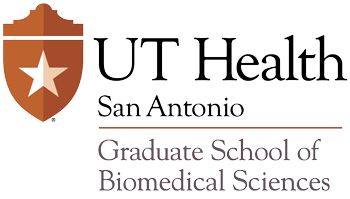Meet the Researcher: Ellen Gaudet Teaches the Lower Limb Using Three-Dimensional Printing
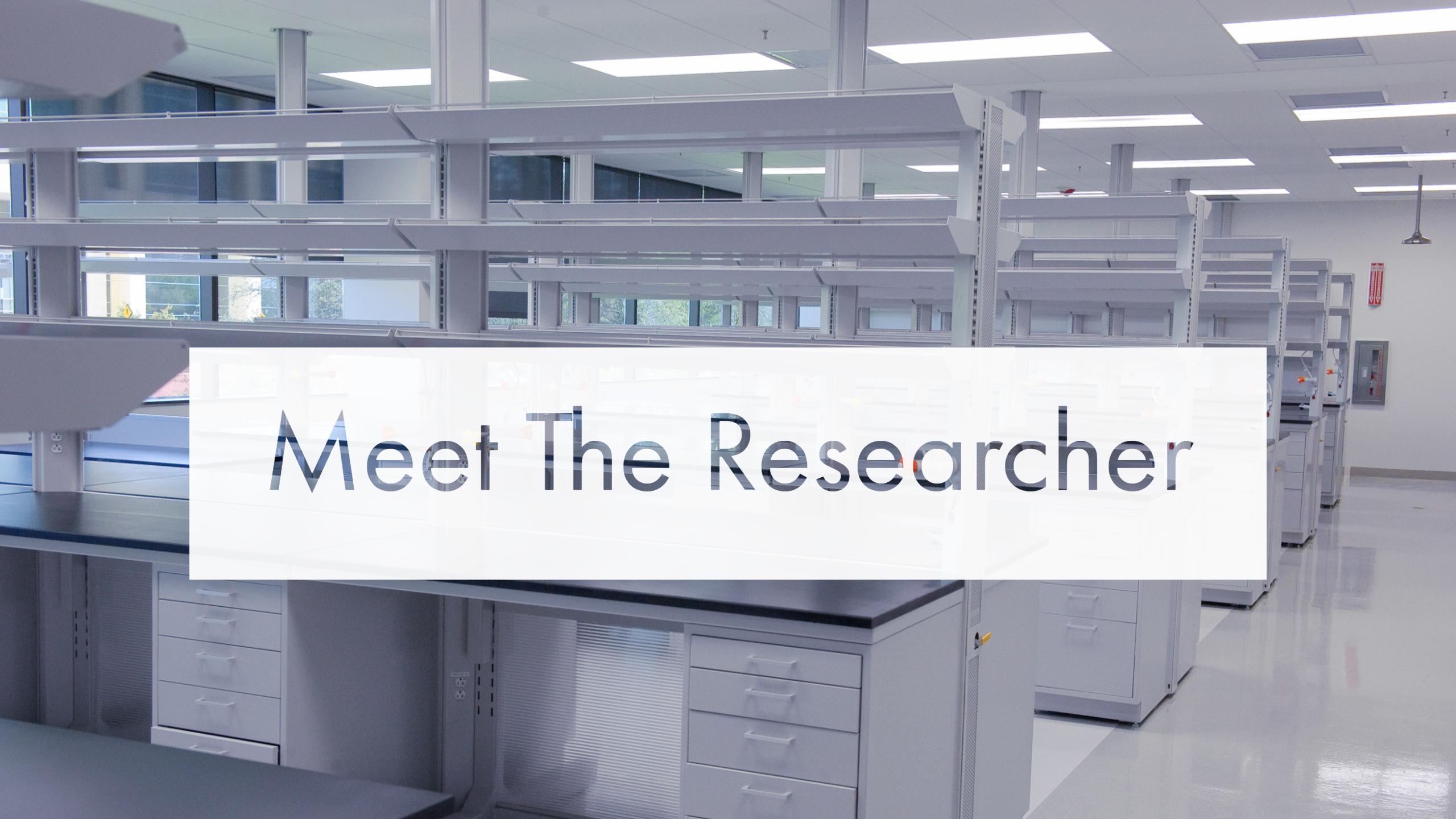
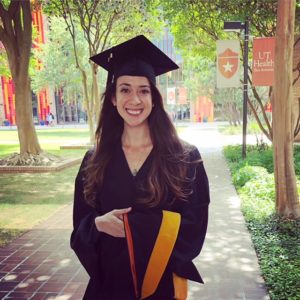 M.S. in Cell Systems & Anatomy (Anatomical Sciences track) student Ellen Gaudet recently graduated and is now starting medical school this summer, at the Texas College of Osteopathic Medicine (TCOM) at the University of North Texas Health Science Center in Fort Worth.
M.S. in Cell Systems & Anatomy (Anatomical Sciences track) student Ellen Gaudet recently graduated and is now starting medical school this summer, at the Texas College of Osteopathic Medicine (TCOM) at the University of North Texas Health Science Center in Fort Worth.
Gaudet was interested in this Master’s program specifically for the opportunities to prepare herself for medical school and to participate in research for the first time.
“I knew that completing a thesis project would be challenging and incredibly helpful for my professional and educational growth. I was also excited to take a gross anatomy course with human cadavers, and to have the opportunity to be a teaching assistant in those courses for medical students,” she said.
 Gaudet initially wanted to research anatomy education for her thesis but then recognized an area that could use additional teaching resources.
Gaudet initially wanted to research anatomy education for her thesis but then recognized an area that could use additional teaching resources.
“The ankle and foot region was also a natural interest of mine since I have been a dancer all my life, and I had a serious ankle injury in high school that actually stopped my ballet career,” she said. “I thought that making a 3D model would be great to learn a lot more about the ankle and to help students learn it in a fun, efficient way.”
Specifically, she developed a 3D printed model of lower limb anatomy, which consists of bones and most muscles of the leg and foot, and is easily assembled and disassembled with magnets and Velcro. She created the model, along with a study guide and instructional video to easily teach skeletal and muscular anatomy to beginning gross anatomy students. 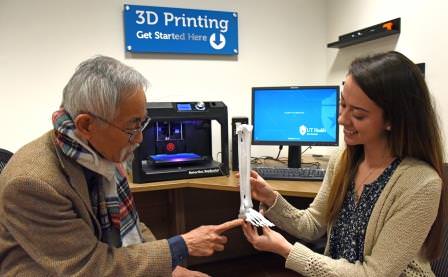
“With student testing, I was able to prove that my 3D printed model is comparable to traditional anatomy teaching materials already used at our institution, and it is set to be incorporated into the gross anatomy curriculum here at UT Health San Antonio. The whole thesis project was pretty challenging to complete, especially learning how to do 3D modeling and figuring out all of the assembly design, but it was very interesting, and definitely rewarding to see that students really enjoyed learning with it. Best of all, I was able to work with such a creative, passionate mentor (Dr. Alan Sakaguchi) who really pushed me and made me love educational projects!”
Gaudet explained that another one of her highlights of her time in graduate school was being a teaching assistant for the medical gross anatomy courses.
“It was an amazing experience getting to know the medical students, some of which have become great friends, and also getting to work and learn alongside awesome faculty members and my fellow classmates,” she said.
Gaudet also received the Phyllis and Neil Bowie Student Community Service Award last year, and was also chosen to represent the graduate school on the Student Legacy Circle, which works with the Alumni and Development offices.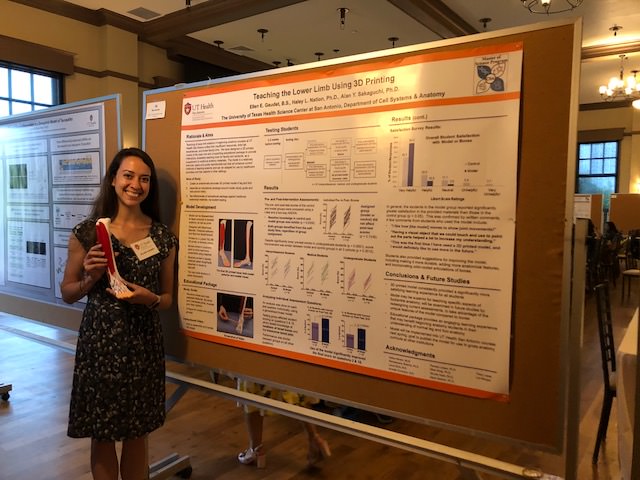
After finishing medical school at the University of North Texas Health Science Center in Fort Worth, Gaudet hope to become a pediatrician in the future, working with chronically ill children and their families.
Her advice to students is this.
“Plan ahead as much as you can and stick to a schedule or timeline with your mentor. Grad school can be overwhelming at times but it’s definitely possible to get good work done each week while also having a full life outside of school. Lean on your support system of classmates, family, and friends to keep you motivated and focused!”
 This article was written by Charlotte Anthony, marketing specialist at the Graduate School of Biomedical Sciences at UT Health San Antonio. This article is part of the “Meet The Researcher” series which showcases researchers at the Graduate School of Biomedical Sciences at University of Texas Health Science Center San Antonio.
This article was written by Charlotte Anthony, marketing specialist at the Graduate School of Biomedical Sciences at UT Health San Antonio. This article is part of the “Meet The Researcher” series which showcases researchers at the Graduate School of Biomedical Sciences at University of Texas Health Science Center San Antonio.
